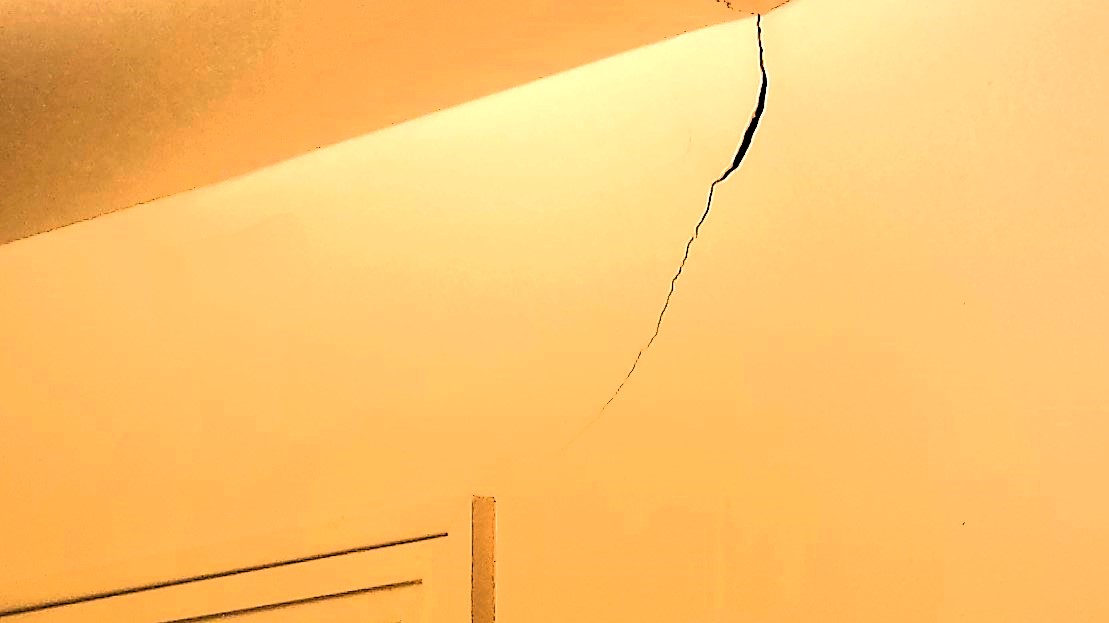Many homes will experience settling cracks. As the home adjusts to its place in the world (and the soils beneath it adjust to the pressure), a home will settle into its location. Settling typically occurs in the first three years of a home’s existence.
When a house settles, it may create some small, thin cracks that create minor cosmetic issues. Those cracks typically can be patched up with a little bit of spackle. Sometimes thin cracks may appear in the foundation as it settles. If the home was constructed properly, these should not create any issues.
However, there are times when some cracks create a more serious concern than normal settling. Soil plasticity—or expansive soils—can create issues.
What are expansive soils? They are soils that will expand when they get wet and contract when they dry. If moisture is constant, the problems are not as significant. However, in an area like ours where years of drought can be followed by torrential rain, the expansion will be much worse.
What’s so bad about expansive soils? Soils that expand and then contract will wreak havoc on anything that is rests in or on that soil. Expansive soils can exert a tremendous amount of pressure per square inch. If it’s someone’s home, their foundation can heave and damage the structure of the home. Once a home’s foundation is damaged, it’s extremely expensive to repair—far more expensive than most people can afford.
How can you be safe? The first thing is to check for cracks. Even small cracks in a foundation can cause problems if they are wide enough for water to penetrate it. Caulking and sealing cracks will be worth your time and effort in the long run.
Keeping water from a foundation is important. Too often people do not pay attention to their downspouts and if they are not properly cleaned or extended, the water will flow against the foundation. Downspouts should always be extended away from your home’s foundation. Downspout extensions are a minor investment to protect your foundation.
If gutters become clogged up, water will overflow and land against your foundation as well. Make sure that your gutters are cleaned out.
Also, the soil near the foundation should be graded to slope away from the foundation, allowing water to naturally flow away from it. This may require a little bit of gardening-type work.
Often older homes will require some work to repair to the grade around the house so it slopes away. This is fairly common because over time rain will erode the slope. Even if there aren’t any signs of water penetration it is still a great idea to improve the slope so that water will move away from your foundation.
Concrete pads such as patios or walkways should also slope away from your foundation. You don’t want to have one sloped the wrong direction, bringing water to your foundation.
When buying a home, you should always make sure that you have a home inspection done. Ideally the home inspector will be able to alleviate your fears. If not, you may realize that the home inspection was money well spent. If more concerns are raised it may be worthwhile to get an engineer’s opinion if you are still interested in the property.
An engineer may get soil samples by boring into the foundation to see what is beneath it. They will look at what is directly beneath the foundation and examine the contents by drilling a small core. They may require multiple samples to determine the extent of the problem (if there is one). They will look at the sub base and the soil to see how well it is compacted and if the extent of the soil’s plasticity and moisture content. If the engineer sees a concern, he or she can provide recommendations on how to repair the problem—and sometimes the potential cost to repair the problem.
Again, keep in mind that most cracks are harmless and aren’t a cause for concern. Being proactive to protect your home and being thorough when buying a home will be important so protect your investment for the long term.

 Facebook
Facebook
 X
X
 Pinterest
Pinterest
 Copy Link
Copy Link
